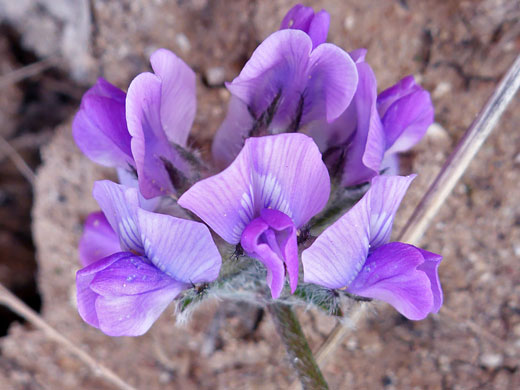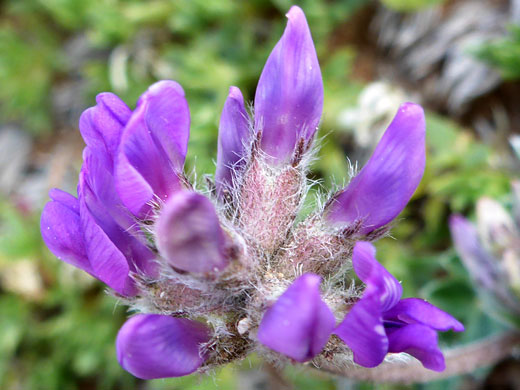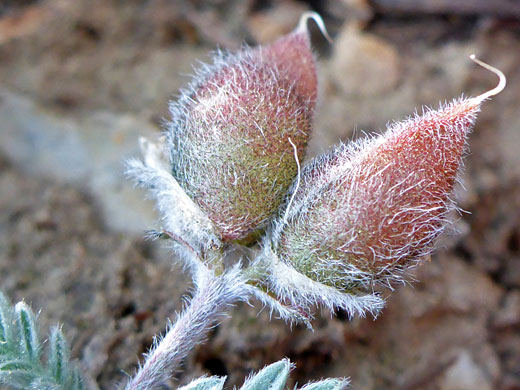Common name:
Mountain locoweed
Family:
Scientific name:
Oxytropis oreophila
Main flower color:
Range:
Nevada, Utah, Arizona and part of southeastern California
Height:
Up to 3 inches
Habitat:
Talus, rocky slopes, sagebrush, open woodland, from 6,500 to 12,000 feet
Leaves:
Basal, silvery-hairy, pinnately divided into between 7 to 17 oblong to elliptical leaflets, around 0.5 inches long
Season:
June to August
Oxytropis oreophila is most widespread on the plateaus of southern Utah, and is also found in other mountainous areas to the west and south. Plants are small, especially in alpine regions, and lack stems; leaves and flower stalks grow directly from the base. Stalks, leaves and calyces have a covering of relatively long, silvery hairs. Leaflets are folded up along the leaf axis.
Flowers are produced in compact clusters of between two and 12; corollas are purple/pink to nearly white, darker when withered. Clusters may rise a little way above the leaves, or be held within. Flowers are conspicuous though small, around half an inch long. Fruits are short, inflated, hairy, egg-shaped pods, around half an inch long, angled upwards when mature.
Flowers are produced in compact clusters of between two and 12; corollas are purple/pink to nearly white, darker when withered. Clusters may rise a little way above the leaves, or be held within. Flowers are conspicuous though small, around half an inch long. Fruits are short, inflated, hairy, egg-shaped pods, around half an inch long, angled upwards when mature.
All Contents © Copyright The American Southwest | Comments and Questions | Contribute | Site Map







